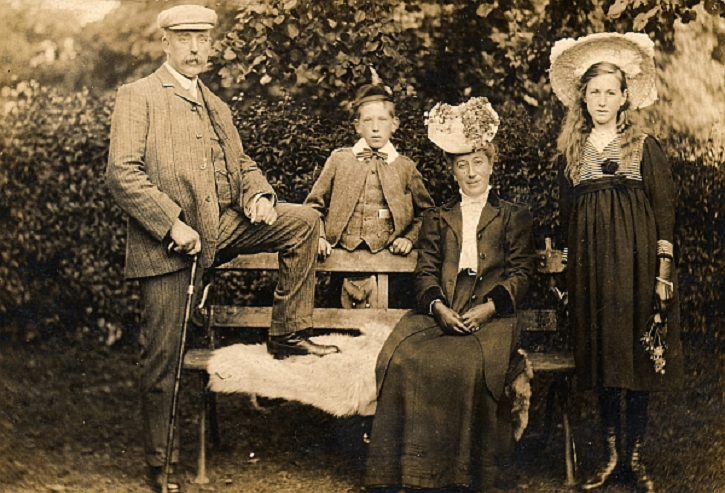The Decade in Review
Reviewing the 2010s and what we can learn from the decade that was. Let's Talk!Receive A Free, No-Obligation Portfolio Review2010-2019: The Decade in Review
Every January, we send our clients a letter titled The Year in Review, where together we look back at the year that was. What were the highlights? What were the “lowlights”? What did we learn?
But this January doesn’t just mark a new year. It marks the beginning of a new decade. (Unless you are a strict observer of the Gregorian calendar system, in which case the next decade begins in 2021. But we digress.) So, for this letter, we’re going to look back at what shaped the markets in the 2010s – and what lessons we should take with us into the ‘20s.
2010-11: Aftershocks of the Great Recession
The best way to see how much can change in a decade is to remember how things were at the end of the last one. In 2010, we were coming off the worst decade for stocks since the 1930s. The Great Recession had devastated the retirement savings of millions of people. Many of the world’s most famous financial institutions had collapsed. And the national unemployment rate was near 10%.1
It was a scary and uncertain time. Many investors had fled the markets entirely by 2010, some for good. As a result, they missed a remarkable recovery that was just around the corner. Not only that, they missed the longest bull market in history.
In hindsight, it might seem obvious that there was nowhere to go but up. But just as the start of a recession is very hard to see coming, the ending can be equally hard to wait for. People can be forgiven for thinking the worst was still to come, because in 2010 and 2011, there were still a lot of ominous headlines to deal with. Remember any of these terms?
Sequestration ● U.S. Debt Ceiling ● European Debt Crisis
● Bailouts ● Austerity ● The Fiscal Cliff
For the first few years, fear abounded as to whether the global economy would be able to recover at all. Nation after nation dealt with spiraling debt that couldn’t be paid off. Remember how often Greece used to be in the news? Some analysts speculated about the possibility of a second recession. 2011 was an especially tenuous year for the stock market, especially when the United States’ credit rating was downgraded for the first time in history.
2012-14: The Federal Reserve intervenes
During this time, however, the world’s largest central banks were working behind the scenes to keep the recovery going. In the United States, for example, the Federal Reserve embarked upon a massive bond-buying program, to the tune of $85 billion per month. This accomplished two things. First, it flooded the money supply and kept interest rates historically low. Lower interest rates made borrowing less costly, which meant businesses and individuals could borrow and spend more, thereby pumping more money into the economy as a whole. This, of course, equaled growth. Slow growth, but growth nonetheless.
The second thing the Fed’s bond-buying did was drive more investors into stocks. Low interest rates often lead to lower returns for fixed income investments, so it was into the higher risk, higher reward stock market that investors went. All this had been going on for years, but the results were only then becoming apparent. So, it came almost as a surprise when the markets reached new highs, even though the economy still seemed to be licking its wounds. It was in mid-2013 that the Dow hit 15,000 for the first time, rising to 16,000 by the end of the year, and then 17,000 the year after.
2015-16: Waiting for the other shoe to fall
But that didn’t mean the markets were immune to volatility. Despite the economic recovery, many experts spent the decade in near-constant fear of another bear market. Every wobble, every market correction, was watched with fearful anticipation. It was like standing next to someone’s hospital bed, thinking every next breath will be their last. Some of this was probably a form of post-traumatic stress caused by the Great Recession. The rest came from the spasms of an ever-changing world.
Oil prices plunged dramatically around this time, hurting both oil-producing nations as well as the energy industry. China’s stock market crashed. The Greek debt crisis reared its ugly head again, prompting fears that “financial contagion” would spread and create another global recession. And then came Brexit. The news that the United Kingdom would leave the European Union sent shockwaves around the world. And here at home, one of the most bitterly contested presidential elections in U.S. history had both sides of the political aisle forecasting economic ruin if the other side won.
But despite the dire predictions, these developments only slowed the recovery’s march rather than derailing it completely. In fact, by July of 2016, the Dow once again hit new heights.
2017-19: The longest bull market
While most of the decade had seen slow-but-steady growth, the horse started picking up speed as it neared the finish line, buoyed by tax cuts, increased government spending, and corporate earnings. Nowhere was this truer than with the Dow. Comprised of thirty of the largest publicly-traded companies, the Dow hit 20,000 for the first time early in 2017 – and closed well above 28,000 on December 31, 2019.2
Exactly ten years before, the number was only 10,428. That’s an increase of over 170% – the culmination of the longest bull market in history.
Of course, it wasn’t all smooth sailing. The trade war with China is an ever-present concern, with rising tariffs often leading to brief, but dramatic downswings in the market. 2018 was actually a down year for the S&P 500, the only one of the decade. And as the 2010s drew to a close, many economists warned of a slowing economy – with maybe even a mild recession in store.
Despite these warnings, investors did what they had done for most of the decade: Act startled, and then head right back into the markets. Some pundits call it a market “melt-up” instead of the usual meltdown.
What have we learned?
So. A remarkable decade filled with twists and turns. But what did we learn?
When we looked back at the last ten years, one thing that struck us was how interconnected the world has become. So many of the storylines that drove the markets originated far beyond our shores. We truly live in a global economy. We invest in other countries, buy products in other countries, loan money to other countries (or apply for loans, as the case may be) and trade with other countries. We might be separated by the world’s biggest ponds, but the ripples near one shore are always felt near the other.
That means two things. One, for advisors like us, it means there’s more than ever to keep track of. But two, it means we should react less and less to the headlines of the day – or to each individual ripple. A butterfly might flap its wings in Beijing and cause a hurricane in Topeka, as the saying goes, but there are butterflies flapping their wings everywhere. That’s one reason why we saw many storms but fewer hurricanes in the 2010s.
Another thing we learned? Sometimes, most times, slow and steady really does win the race. We were all taught the truth of this as children when we learned the story of the tortoise and the hare. The past decade proved it. Everyone loves growth that comes fast and hot. But when something burns fast and hot, it tends to burn out faster, too. One reason we never saw the recession so many people feared is because the economy recovered as slowly as it did. It’s a lesson we can apply to our own financial decisions. While it’s always tempting to chase after windfalls and jackpots, it’s so much smarter to prioritize steady progress over short-term whims. The race to your goals is a marathon, not a sprint.
A third thing we learned is how often things don’t go as predicted. In 2010 and 2011, many experts predicted a gloomy decade for the stock markets – and they had good reason to think so! But it didn’t happen. When, say, Obamacare became the law of the land, many experts predicted economic disaster. As of this writing, it hasn’t happened. When Brexit became a reality, many experts predicted a global catastrophe. As of this writing, it hasn’t happened. When President Trump was elected, many experts predicted a market meltdown. As of this writing, it hasn’t happened. We all have our opinions on whether events like these were good or bad, of course. But it’s a good thing we didn’t base our investment decisions on any expert’s predictions!
Because if there’s one thing we learned this decade, is that a prediction is like a person’s appendix – pretty much useless.
2020 and beyond
With that in mind, we won’t make any predictions for the coming decade. If history is correct – and it always is – another market correction, another bear market, another recession will come eventually. Whether it’s this year, or next, or the one after that, we can’t say. What’s more important is that we remember this: It’s when we fly that we should have the healthiest respect for gravity. But it’s when we’re on the ground that we should raise our eyes to the skies.
Investing is like trying to find our way in the dark – and our strategy is our North Star. It’s so much more valuable than any prediction! We may bump into the occasional obstacle. Sometimes, we may even trip. But if we hold to that star, we will keep moving forward in the direction we want to go.
We will make this decade whatever we want it to be.
Happy New Year! Our team can’t wait to spend the next decade with you.
1 “State Unemployment rates in 2010,” U.S. Bureau of Labor Statistics, https://www.bls.gov/opub/ted/2011/ted_20110301.htm
2 “Stocks close out at highest end-of-year gains since 2013,” Chicago Sun Times, https://chicago.suntimes.com/business/2019/12/31/21045017/us-stock-market-year-end-close-out-2019
Are you looking for a financial advisor? Do you feel confident about your retirement account decisions? Business owner looking for a company 401K plan administrator? Or an athlete or high net worth individual needing long term financial planning advice? Research Financial Strategies can help. We are here to help you design a financial strategy that is molded specifically for you. One that changes as your life changes. Financial investments to help you live worry-free now and in the future.
In our experience, we’ve found that the most successful solutions begin by asking the right questions.
We gain a broader perspective of your goals and the future you wish to create
Today is a Good Day to Start Your Financial Plan
1. We Listen
Our focus is on your life and priorities. Not just your portfolio. That’s why we start by listening and learning about you. Each individual client has different needs and concerns that need to be addressed. We carefully listen to those concerns. We will gain important information that will help us to best serve our clients and help protect their financial futures.
2. Plan
Together we will work to implement the plan that was developed for you. We will keep you constantly updated on what is happening and evolve our plan as your life happens.
Above all, our advisors want to help you meet your goals, even if that means helping you find out what your goals are.
3. We Take Care Of The Rest
We are here for you whenever you need us. Call your Research Financial Strategies Financial Advisor at any time, for any reason. You will always have access to the guidance you need whether it is high tech, high touch or a combination of the two. Your personal Financial Advisor will help you figure out how to pay for life’s great adventures!
Ready to Make a Change?
With an “education first” approach, Research Financial Strategies ensures that our clients understand how their money is being invested, and we guide the development of financial plans that help them achieve their goals for personal wealth and retirement security.
How Can We Help?
Annuities, Potomac, Annuity, Bethesda, Annuity Advisor, Rockville,





